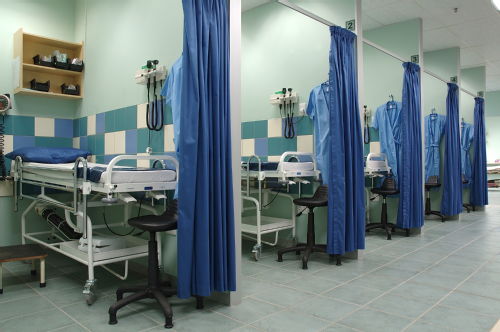"I have to readmit – it’s getting better"
 Professor Aileen Clarke is Professor of Public Health Research, Director of Warwick Evidence and Acting Director of Division of Health Sciences at Warwick University.
Professor Aileen Clarke is Professor of Public Health Research, Director of Warwick Evidence and Acting Director of Division of Health Sciences at Warwick University.
Hospital readmissions for emergency care have been the subject of policy attention for a few years. The common view is that they are preventable by a better standard of care; however the reality is much more complex.
Our research, published in the Emergency Medicine Journal, throws some light on this reality.
We looked at 83 million hospital admissions in England using data sets spanning all NHS hospitals over a 10 year period. The team looked at patterns of readmission within 30 days, at an individual level. These large data sets make it possible for us to find out the most common patterns across the country.
Around 5.8 million of all admitted patients experienced an emergency readmission but, perhaps surprisingly, only one in 20 (5.3 per cent) of those people had formal diagnostic codes on readmission which clearly indicated a complication from an earlier admission.
If we relax our definition of what sub-optimal care is, we can find a further 25 per cent of patients displaying a possible link between their prior care and the cause of readmission (for example, incomplete surgery during first admission requiring further surgery).
This only accounts for around 30 per cent. So what other reasons were there for readmissions?
There is a clear problem with weekly peaks (at seven, 14, 21 and 28 days after discharge), indicating that perhaps not all ‘emergency’ readmissions are genuine emergencies. We also saw increased readmissions around public holidays – there were significant spikes as a consequence of people wanting to be at home for Christmas.
There were other categories (19 per cent) showing the causes of admission as unconnected to the original admission and indeed sometimes readmissions were related to a different body system altogether. Incidentally, 0.03 per cent of readmissions were due to accidents involving buses.
One of the largest groups of emergency readmission patients were those with a previous diagnosis of longer term disease (heart disease, arthritis or chronic lung disease). Some of these patients had relatively stable health but readmissions pointed to a temporary crisis for people with otherwise chronic conditions.
For some people of course, the risk of an acute crisis is the flip side of a treatment regime that maximises people’s wellbeing or independence – readmission may be an inevitable consequence of living with a chronic condition.
For others, we considered that their emergency readmission was part of a more unstable and worsening pattern in patients’ chronic disease.
This study highlights just how essential these types of analyses are; giving us the benefit of looking at what happens to a very large number of patients over a period time through linking records. Modern data sets give us a broader and more detailed view, making this type of study increasingly possible.
Policies on readmission funding (or indeed, not funding) deserve close attention – they need to be really well-tailored to account for the underlying causes. Too often our view of a service is one-off, or cross-sectional in nature, we simply know how many people were admitted, how many people were discharged or how many people died.
If we’re to affect these policies and improve public health, it is increasingly important that we seize these opportunities and seek to go beyond simply measuring how many people were admitted or readmitted on any one day. This study allows us to understand more about important patterns of care so that we can impact on individual cases; how people are treated and whether the service has worked to meet their needs.
This blog article was first published on Nuffield Trust on 7 April 2014.
Read the orignal article here
